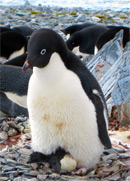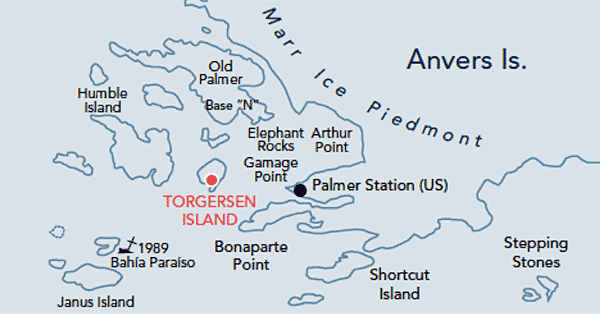|
Palmer Station Weather Fetching Weather Data...
More Antarctic Webcams NOTE: The webcam image is often obscured due to harsh and unpredictable weather conditions. Located on Anvers Island near the Antarctic Peninsula, Palmer Station (64° 46°S, 64° 03°W) is named for Nathaniel B. Palmer, who in 1820 on a sealing expedition in his 47-foot (14-meter) ship the Hero became the first American to record sighting Antarctica. The original station was built in 1965. In 1967, the U.S. Navy began construction of the current larger and more permanent station approximately a mile east of the original site. The first building at the new station, the biology laboratory, opened its doors to science in 1970. Today, two main buildings and several smaller structures make up Palmer Station and provide housing and research facilities for scientists and support personnel. Of the three U.S. Antarctic stations, Palmer is the only one that is accessed routinely during the winter. With ice cliffs rising above Arthur Harbor and the station, the Marr Ice Piedmont covers Anvers Island. The highest mountains on the island are Mt. Francais (9,055 feet/2,760 meters) and Mt. Agamemnon (8,438 feet/2,572 meters). Additional Links and Resources Average temperatures are 36° F (2° C) in austral summer and 14° F (-10° C) in austral winter. The station frequently experiences high winds, sometimes reaching 70 knots or more. Average annual precipitation is 13 feet (4 meters) of snow and 30 in (76 cm) of rain. Palmer Station lies outside the Antarctic Circle, so in the middle of austral winter there are five hours of light during each day. Conversely, the austral summer brings long days of 19 hours of light and 5 of twilight. These changes in light influence seasonal cycles of temperature, weather, sea ice formation, and the organisms that live in this area. The station supports science year-round and accommodates about 20 people in the winter and up to 44 in the austral summer. There are dormitory bedrooms, communal bathrooms, and a cafeteria-style kitchen. Everyone helps clean, and many participate in weekly science lectures and social events. |
|||||||||||||||
Palmer Station Webcams



For USAP Participants |
For The Public |
For Researchers and EducatorsContact UsU.S. National Science FoundationOffice of Polar Programs Geosciences Directorate 2415 Eisenhower Avenue, Suite W7100 Alexandria, VA 22314 Sign up for the NSF Office of Polar Programs newsletter and events. Feedback Form |





